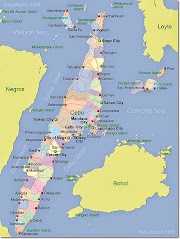Make Your Trip to Baguio
Filipinos speak of BAGUIO with a certain reverence, but for anyone who has seen Europe's mountains or America's national parks, it's something of a disappointment, nothing more than a conveniently placed one-night stop on the way to the mountains beyond. Still, there are some sights in Baguio and at least the nightlife is interesting and cheap. This is a university city, and the student population has given rise to a number of bohemian little cafés, bars and live-music venues.
Also known as City of Pines or City of Flowers, Baguio lies on a plateau 1400m above sea level with mountains on all sides. In the sixteenth century, intrepid Spanish friars had started to explore the region, finding a land of fertile valleys, pine-clad hills and mountains, lush vegetation and an abundance of minerals such as copper, gold and ore. Stories about this new discovery spread fast in the capital, and soon more friars, soldiers and fortune-hunters were trekking north to convert the natives to Christianity and profit from the rich natural resources. In the nineteenth century, colonizing Americans took over and developed Baguio into a modern city, a showcase recreational and administrative centre, from where they could preside over their precious tropical colony without working up too much of a sweat. In 1944, when American forces landed in Leyte, the head of the Japanese Imperial Army, General Yamashita, moved his headquarters to Baguio and helped establish a puppet Philippine government there under President José Laurel. In 1945 the city was destroyed and thousands lost their homes as liberating forces flushed out Yamashita and his army. Yamashita quickly fled north into the interior, leaving a small delaying force to cover his ignominious exit.
The city is also etched on the Filipino consciousness as site of one of the country's worst natural disasters, the earthquake of July 16, 1990, which measured 7.7 on the Richter Scale and killed hundreds, mostly in the city's vulnerable shanty towns, many of which cling precariously to the sides of steep valleys.
Baguio's attraction as a spiritual mountain retreat that somehow counteracts the depravity of Manila has faded in recent years. Even the government's tourism secretary was famously moved to refer to Baguio as a "tragedy" when he visited in 2002. The reasons are not hard to divine. The city centre, particularly Session Road, is a tangle of smoke-belching jeepneys and pollution has increased as a result, making a gentle stroll along what should be a picturesque thoroughfare a battle against noise and fumes. Equally disappointing is the lack of good trekking in the hills immediately surrounding the city. You would have thought a city with mountains on every side would have plenty of marked trails through wilderness areas, but there's nothing; just shabby hand-painted banners tied to pine trees advertising college reunions, charismatic prayer meetings and annual corporate conventions. (Rough Guides)









0 Comments